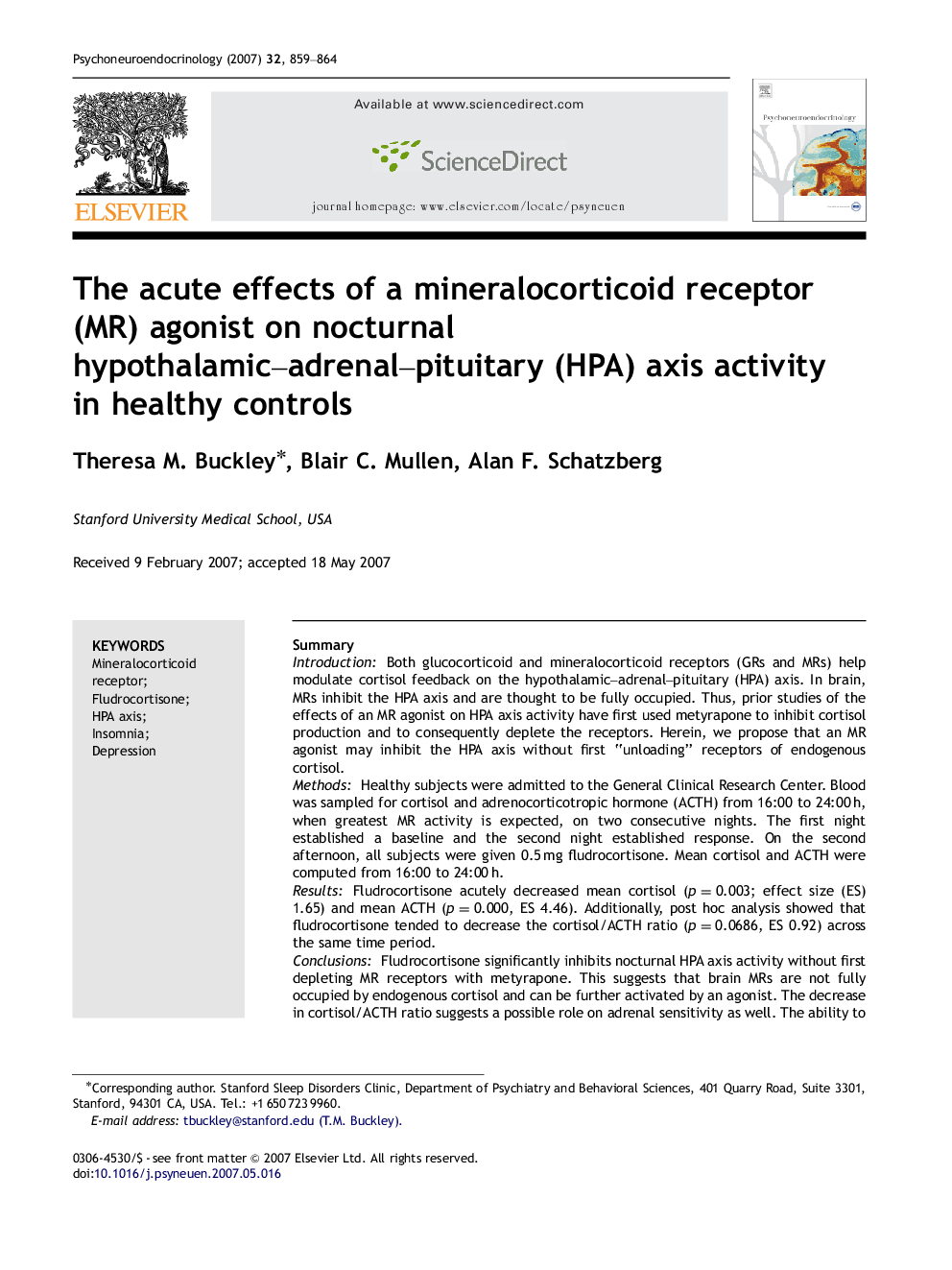| Article ID | Journal | Published Year | Pages | File Type |
|---|---|---|---|---|
| 337126 | Psychoneuroendocrinology | 2007 | 6 Pages |
SummaryIntroductionBoth glucocorticoid and mineralocorticoid receptors (GRs and MRs) help modulate cortisol feedback on the hypothalamic–adrenal–pituitary (HPA) axis. In brain, MRs inhibit the HPA axis and are thought to be fully occupied. Thus, prior studies of the effects of an MR agonist on HPA axis activity have first used metyrapone to inhibit cortisol production and to consequently deplete the receptors. Herein, we propose that an MR agonist may inhibit the HPA axis without first “unloading” receptors of endogenous cortisol.MethodsHealthy subjects were admitted to the General Clinical Research Center. Blood was sampled for cortisol and adrenocorticotropic hormone (ACTH) from 16:00 to 24:00 h, when greatest MR activity is expected, on two consecutive nights. The first night established a baseline and the second night established response. On the second afternoon, all subjects were given 0.5 mg fludrocortisone. Mean cortisol and ACTH were computed from 16:00 to 24:00 h.ResultsFludrocortisone acutely decreased mean cortisol (p=0.003; effect size (ES) 1.65) and mean ACTH (p=0.000, ES 4.46). Additionally, post hoc analysis showed that fludrocortisone tended to decrease the cortisol/ACTH ratio (p=0.0686, ES 0.92) across the same time period.ConclusionsFludrocortisone significantly inhibits nocturnal HPA axis activity without first depleting MR receptors with metyrapone. This suggests that brain MRs are not fully occupied by endogenous cortisol and can be further activated by an agonist. The decrease in cortisol/ACTH ratio suggests a possible role on adrenal sensitivity as well. The ability to lower nocturnal HPA axis activity has interesting implications in disorders of HPA axis excess, such as insomnia, depression and healthy aging.
